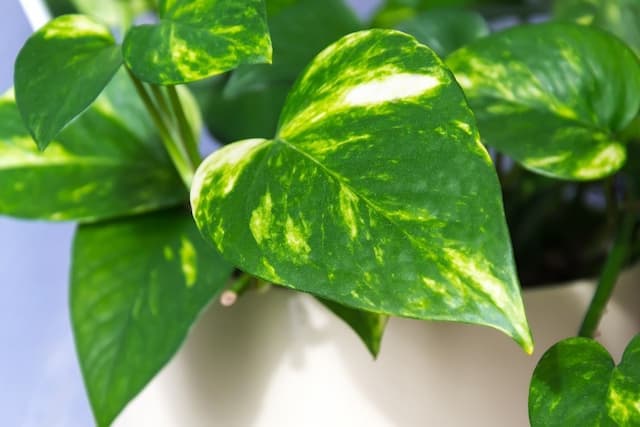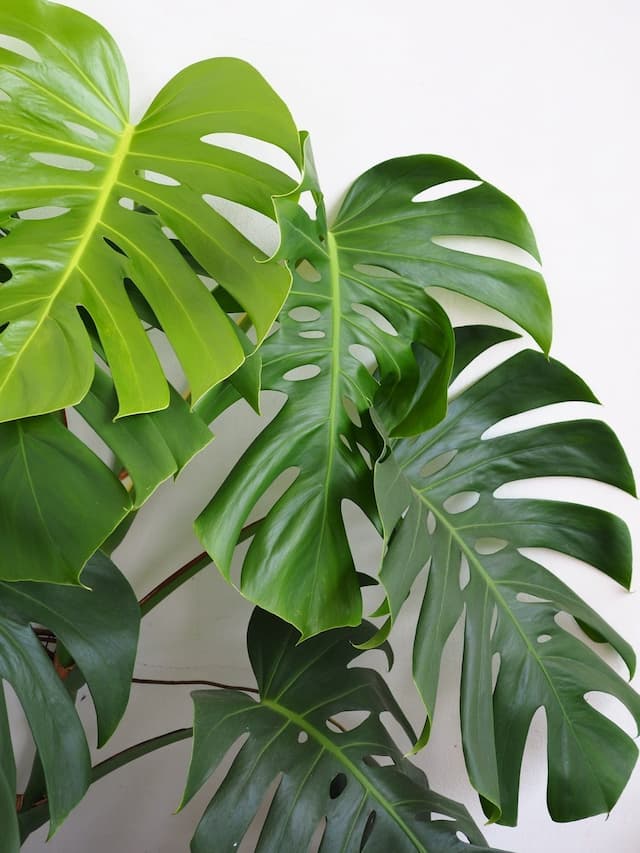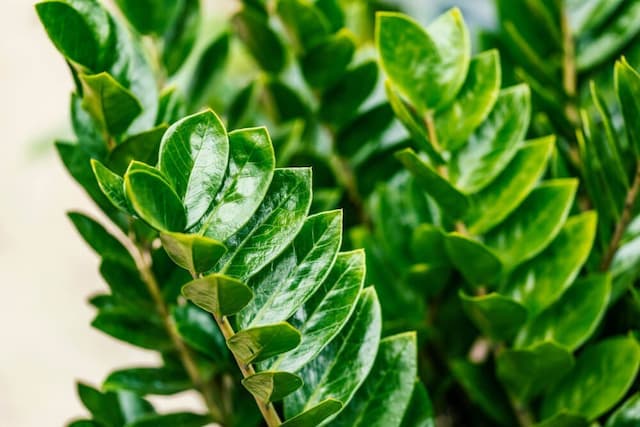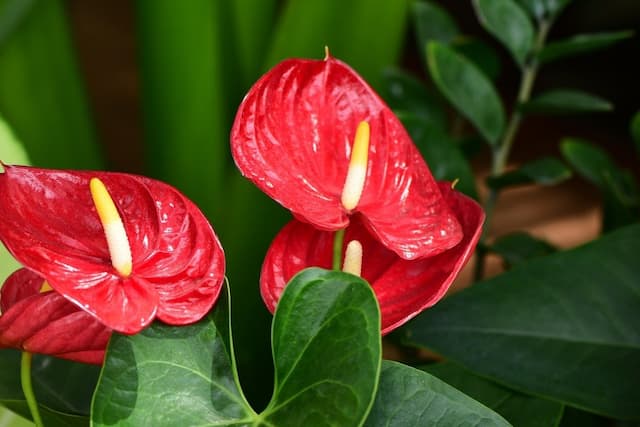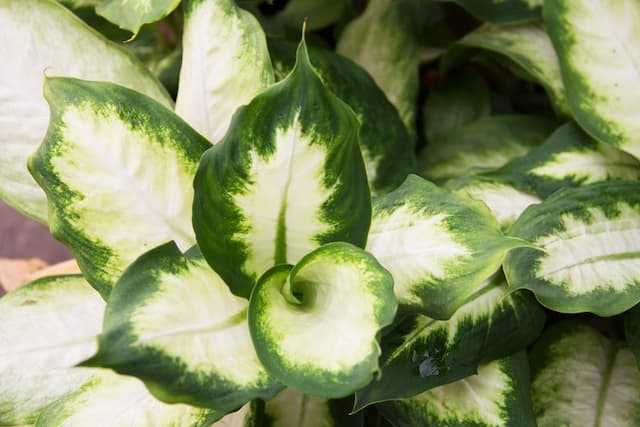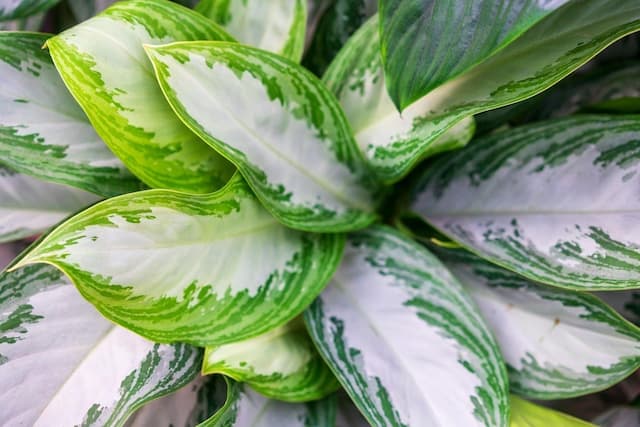Peace Lily Spathiphyllum



ABOUT
Spathiphyllum is a genus of plants in the Araceae family, commonly known as the Peace lily.
These plants are native to tropical regions of the Americas and are popular as houseplants due to their attractive, glossy leaves and white, spathe-like flowers.
They are known for their ability to thrive in low light conditions, and for their ability to purify the air by removing toxins such as formaldehyde, benzene, and trichloroethylene from the air.
The plant has large, glossy, dark green leaves and its delicate, white, hood-shaped flowers that sit on tall, slender stems. The flowers are usually produced in clusters of 2-5 and they are often produced throughout the year.
The leaves are long, broad, and glossy, reaching 8 - 18 inches in length. The plant can grow up to 3 feet tall and wide.
The plant has a lush tropical look and it's often used in indoor gardens, offices, and homes.
About this plant
 Names
NamesFamily
Araceae
Synonyms
Peace Lily, White sails, Spathe flower
Common names
Hydnostachyon, Massowia, Spathiphyllopsis, Amomophyllum, Leucochlamys
 Toxicity
ToxicityTo humans
Spathiphyllum is considered to be toxic to humans when ingested.
The plant contains calcium oxalate crystals which can cause burning and irritation in the mouth, throat, and stomach, as well as difficulty swallowing. Ingestion of large amounts of the plant can lead to more severe symptoms, including vomiting, diarrhea, and breathing difficulties.To pets
Spathiphyllum is also considered to be toxic to animals when ingested, particularly cats and dogs.
Ingestion of the plant can cause burning and irritation in the mouth, throat, and stomach, as well as difficulty swallowing. It can also lead to vomiting, drooling, and difficulty breathing.
If your pet is showing symptoms of poisoning after consuming Spathiphyllum, it's important to seek veterinary care immediately.
 Characteristics
CharacteristicsLife cycle
Perennials
Foliage type
Evergreen
Color of leaves
Green
Flower color
White
Height
Up to 3 feet
Spread
Up to 3 feet
Plant type
Herb
Hardiness zones
9
Native area
Tropical regions of the Americas
Benefits
 General Benefits
General BenefitsSpathiphyllum releases moisture into the air, which can increase the humidity in a room. This can be especially beneficial in dry, heated environments, such as homes and offices;
Spathiphyllum has a lush, tropical appearance, and its glossy leaves and delicate white flowers make it an attractive addition to any indoor setting;
Spathiphyllum is relatively easy to care for, it prefers moderate light and humidity and it can tolerate a wide range of temperatures. It's also easy to propagate from cuttings. Medical Properties
Medical PropertiesAir purifying properties: Peace lily is known to be an effective air purifier, helping to remove harmful toxins such as formaldehyde, benzene, and trichloroethylene from indoor environments. It does this by absorbing these chemicals through its leaves and roots.
Anti-inflammatory properties: Some studies have suggested that extracts from peace lily may have anti-inflammatory properties, which may make it useful for treating conditions such as arthritis and other inflammatory disorders.
Wound healing properties: Peace lily contains compounds that have been found to promote wound healing, which may make it useful for treating minor cuts and scrapes.
Analgesic properties: Peace lily contains compounds that have been found to have analgesic (pain-relieving) effects, which may make it useful for treating minor aches and pains.
However, it's important to note that peace lily can also be toxic if ingested, particularly the leaves, which contain oxalates that can cause irritation and swelling of the mouth and throat. Therefore, it should not be used internally or without proper supervision from a qualified healthcare professional. Air-purifying Qualities
Air-purifying QualitiesSpathiphyllum is known to be an effective air purifying plant, it can remove toxins such as formaldehyde, benzene, and ammonia from the air.
 Other Uses
Other UsesSpathiphyllum can be used to create an indoor jungle or a tropical garden, along with other plants such as ferns, monstera, and calathea;
Due to it's delicate and elegant appearance, Spathiphyllum can be used as a wedding and event decorations, it can be used to create a lush and tropical look and combined with other flowers;
Spathiphyllum leaves can be dried and used to create different crafts, it can be used to make wreaths, garlands, and other decorative items.
Interesting Facts
 Feng Shui
Feng ShuiIn feng shui, Spathiphyllum is considered to bring positive energy, also known as chi, into a space.
It is believed to bring harmony, peace, and balance to the home. Spathiphyllum is often used in the bedroom or living room as it is believed to promote restful sleep and to improve relationships. Zodiac Sign Compitability
Zodiac Sign CompitabilityIn astrology, it is not common to associate plants like peace lily with zodiac signs.
 Plant Symbolism
Plant SymbolismSpathiphyllum is often given as a gift for funerals and memorial services, it's said to symbolize peace, serenity, and purity.
The white flowers of the Spathiphyllum are said to symbolize innocence and purity, while the lush green leaves are said to symbolize growth, renewal, and rebirth.
 Water
WaterSpathiphyllum should be watered once a week, allowing the top inch of soil to dry out before watering again.
Water the soil thoroughly, allowing excess water to drain away. If the soil remains soggy, it can lead to root rot. Light
LightSpathiphyllum prefers medium to bright, indirect light. It can tolerate lower light levels, but will not do as well in darker areas.
It is best to avoid direct sunlight, as this can cause the leaves to burn. Temperature
TemperaturePeace Lily, prefers warm temperatures between 65-85°F.
Temperatures below 60°F can cause the plant to go dormant and any temperatures below 50°F can cause permanent damage to the plant.
It is important to keep the temperature consistent and avoid sudden temperature changes. Pruning
PruningPruning Spathiphyllum is relatively simple, you can prune the plant by cutting back the long, leggy stems. This will encourage bushier growth and keep the plant looking neat and tidy. You can also remove any yellow or brown leaves to keep the plant looking healthy.
 Cleaning
CleaningAs needed
 Soil
SoilSpathiphyllum prefers a moist, well-draining soil that is rich in organic matter.
A peat-based potting mix or a mixture of peat moss, perlite, and vermiculite is ideal.
The soil pH should be slightly acidic to neutral (around 6.0-7.0) as Spathiphyllum does not tolerate highly alkaline soils. Repotting
RepottingSpathiphyllum should be repotted every 2-3 years, or when the plant becomes root-bound.
Repotting should be done in the spring, before new growth begins. When repotting, choose a pot that is one size larger than the current pot, to allow room for the plant to continue to grow. Humidity & Misting
Humidity & MistingSpathiphyllum prefers a humidity level of 50-60%.
The humidity level can be increased by regularly misting the leaves, or by placing a tray of water near the plant. It's important to avoid placing the plant in drafty areas or in locations where it will be exposed to dry air. Suitable locations
Suitable locationsIndoor
All year round
Outdoor
Growing Spathiphyllum outdoors is possible in warm climates and in shaded areas.
Spathiphyllum prefers partial shade.
The plant prefers temperatures between 60-75°F.
Keep the soil consistently moist but not waterlogged. Allow the top inch of soil to dry out before watering.
Spathiphyllum prefers humidity levels of 50-60%.
Fertilize every 4-6 weeks during the growing season (springand summer) with a balanced, water-soluble fertilizer.
It is important to note that these are general guidelines and the specific needs of the plant may vary depending on the variety of Spathiphyllum, and the conditions under which it is grown.Hardiness zone
10 - 12 USDA
 Life cycle
Life cycleThe life cycle of Spathiphyllum begins when the plant is propagated from a cutting or a division of an existing plant. Once the plant is established, it will begin to produce leaves, which will continue to grow and mature throughout the life of the plant. The leaves of Spathiphyllum are large, glossy, and dark green, and they are typically arranged in a rosette pattern.
During the growing season, Spathiphyllum will produce flowers, which are typically white and are borne on tall, slender spikes. The flowers of Spathiphyllum are not true flowers, but rather are spathes, which are specialized leaves that enclose the true flowers. The flowers are followed by the production of berries, which are typically small and green.
After the growing season, Spathiphyllum will enter a dormant period, during which the plant will not produce new leaves or flowers. The plant will continue to store energy in its roots and rhizomes, which will be used to support new growth the following growing season.
It is important to note that the growth and blooming of Spathiphyllum may vary depending on the variety of the plant and the conditions under which it is grown. Spathiphyllum can be grown as an indoor houseplant and it may bloom year-round depending on the light and temperature conditions. Propogation
PropogationPropogation time
Spring - early summer
By DIVISION:
This is done by taking the plant out of its pot and gently separating the roots into two or more parts, making sure each part has a healthy root system. The newly divided plants can then be planted in individual pots, making sure to keep the soil moist.
By STEM CUTTINGS:
To do this, take a stem cutting about 4-6 inches long and remove the bottom leaves. Dip the cutting in rooting hormone and place it in a pot filled with moist potting soil. Keep the soil moist and make sure the cutting is in a warm, bright location.
By AIR LAYERING:
This is done by making an incision on the stem of the plant and packing it with moist sphagnum moss. The moss should be kept moist and covered with plastic wrap. After a few weeks, the stem should be rooted and can be cut away from the parent plant and potted up.
By LEAF CUTTINGS:
To do this, carefully remove a leaf from the stem and make sure to keep the stem intact. Place the leaf cutting in a pot with moist potting soil and keep it in a warm, bright location. In a few weeks, new roots will begin to form and the leaf cutting can be potted up.
 Pests
PestsSpider mite, Whitefly, Mealybug, Aphid
 Diseases
DiseasesRoot Rot, Leaf spot
